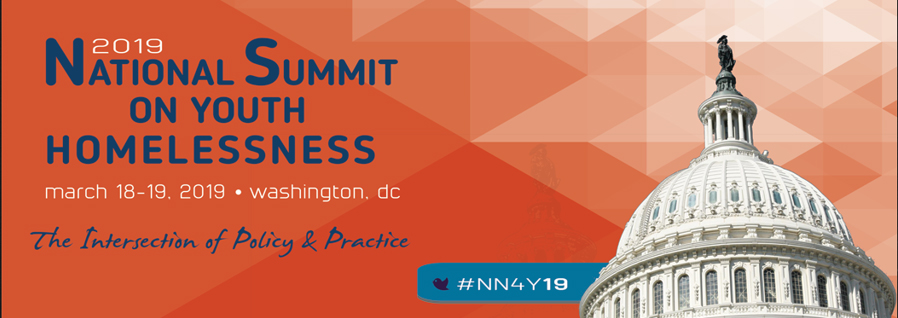
Youth run away or become homeless for many reasons, including physical and sexual abuse, abandonment, and aging out of the foster care system with nowhere to go. Research has shown that these youth face a range of challenges related to their health, emotional well-being, and safety. Among other risks, runaway and homeless youth are vulnerable to becoming victims of sex trafficking and entering the juvenile justice system.
The National Network for Youth (NN4Y), a public education and policy advocacy organization, works to prevent and end youth homelessness. As part of that commitment, NN4Y hosts an annual National Summit on Youth Homelessness to focus on how government agencies, policymakers, service providers, youth leaders, and other experts can collaborate to prevent and respond to this serious problem.
The summit, held on March 18–19, 2019, in Washington, DC, featured “Hill Day,” an opportunity for attendees to meet with congressional staff to educate them about youth and young adult homelessness. NN4Y offered a webinar to prepare attendees for the discussions on Capitol Hill.
The event’s plenary sessions included an interactive discussion with members of NN4Y’s Youth Advisory Council as well as panel discussions on proposed congressional legislation that will impact efforts to address youth homeless, legal problems that can arise in helping homeless youth and how to leverage existing legal resources, a review of policy and advocacy initiatives aimed at keeping homeless youth out of the juvenile justice system, and a federal agency roundtable that discussed new and ongoing national initiatives to prevent and respond to youth homelessness.
Dr. TeNeane Bradford, OJJDP Associate Administrator, participated in the event’s federal agency roundtable discussion alongside representatives from the Departments of Education (ED), Health and Human Services (HHS), Housing and Urban Development (HUD), and Labor, as well as the U.S. Interagency Council on Homelessness. The Department of Justice—through OJJDP—committed to incorporating language focused on the needs of homeless and runaway youth in applicable OJJDP fiscal year 2019 and 2020 solicitations; sharing information about ED, HHS, and HUD programs and resources for addressing homeless and runaway youth with the Office’s Title II grantees; and developing opportunities for training state and local grantees on homeless and runaway youth issues in partnership with other federal youth service agencies.
Following the 2019 summit, direct service providers participated in a 1-day training session to earn a Certificate on Human Trafficking for Runaway and Homeless Youth Providers. NN4Y developed the training in partnership with the McCain Institute for International Leadership. The training focuses on how to identify at-risk youth, connect youth who have been trafficked to services, and arrange specialized care.
Resources:
OJJDP recently published a juvenile reentry toolkit that includes guidance on identifying and addressing a youth’s housing needs as part of the transition planning process. For more information on the toolkit, watch this OJJDP video.
OJJDP’s Runaway and Homeless Youth webpage describes the Office’s efforts to address youth homelessness through mentoring, drug treatment courts, reentry, research, and other initiatives. The webpage also provides access to a range of other information and resources, including programs, trainings, and publications.
In January 2019, the Family and Youth Services Bureau, in collaboration with OJJDP, sponsored a webinar panel discussion, How Mentoring Supports Runaway and Homeless Youth Victims and Survivors of Commercial Sexual Exploitation and Sex Trafficking. The panel discussion tapped into the experiences of programs that provide mentoring services specifically for these youth. The webinar recording is available online.
